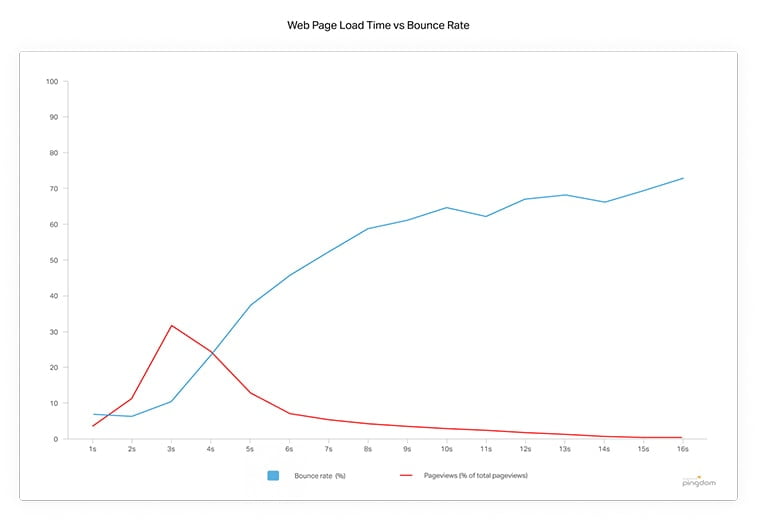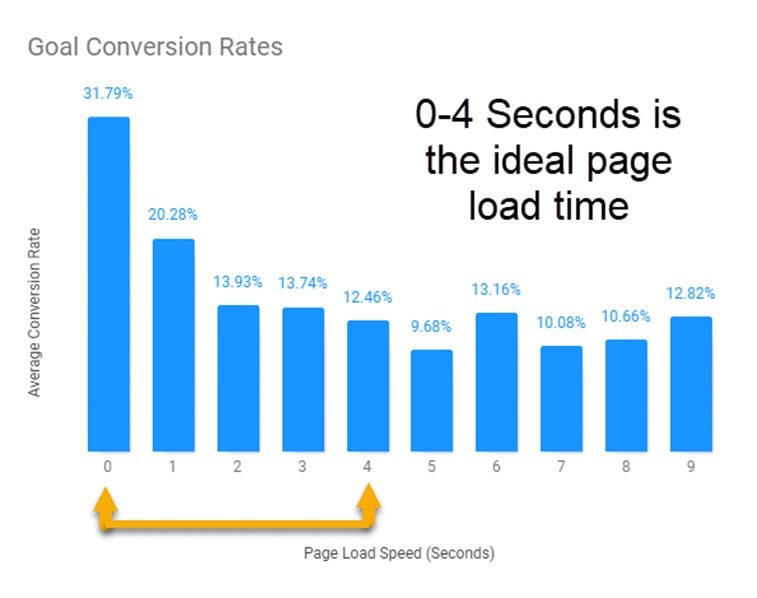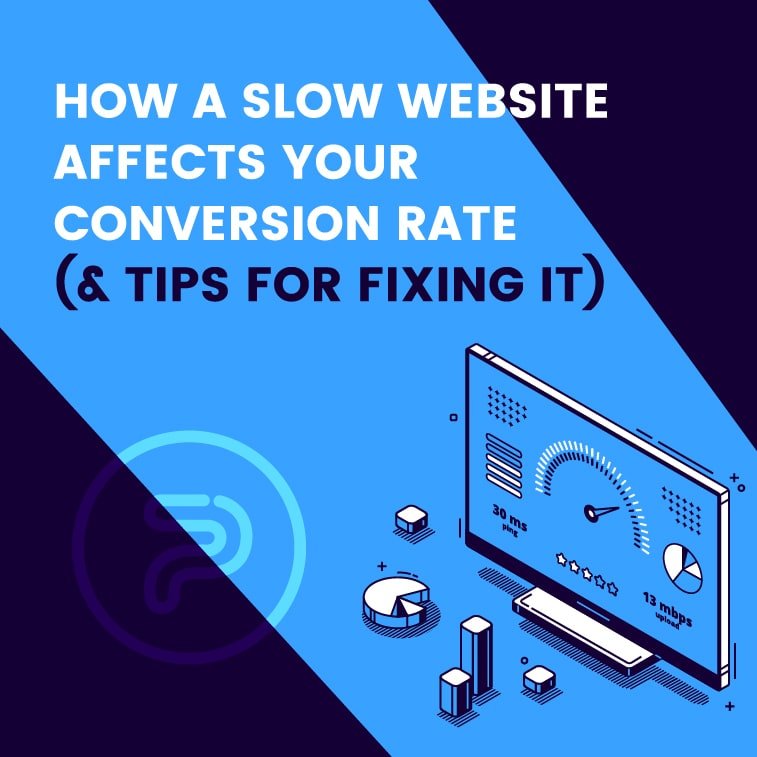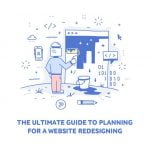Nowadays, it’s never been easier to create a website and start an online business. Many hosting providers support the whole website creation process from setup to launch, and you can have a good-looking website in a matter of hours. With that being the case, simply having a website up isn’t enough. Why?
Well, your competition is now fiercer than ever, and even the slightest feature or optimization will help you to gain an edge. It’s evident that users don’t like slow websites, but the question for many beginners is – to what extent does a slow website factors that affect conversion rate and your revenue? Here’s everything you’ll want to know.
How a Slow Website Factors Affecting Conversion Rate
According to Google, if your page load speed ranges between 1 – 3 seconds, the chances of a user bouncing from your website is 32%. Add two more seconds, and we’re talking about 90%. People will leave a website if it’s too slow, which won’t only affect your revenue but also your reputation in the long run. Keep reading to understand how a slow website can negatively impact your business and what you can do.
#1 Customer Satisfaction

As we’ve already mentioned, a slow website doesn’t only affect the revenue, but also the overall reputation, customer satisfaction, and even SEO (Search Engine Optimization). If you have a hard time understanding why people hate a slow website, let’s think about the next scenario. Imagine you are hungry, and you’ve ordered a delicious pizza at your doorstep. An hour later, your food still hasn’t arrived. You’ve lost all the appetite until your pizza arrived, and probably, you’re never going to order from that place again. Users are impatient, and they want instant results and fast service. What’s more, if you can’t provide it, you can be sure there’s a competitor who will.
The pizza ordering analogy perfectly explains why customer satisfaction is critical for business success. According to Pingdom, 38% of users leave the page if the page load exceeds 5 seconds.
Want to keep your customers satisfied? Here are a few ways to decrease page load speed:
- Compress images
- Use CDN and caching
- Invest in a fast and reliable hosting service (Read more on web hosting plans and reviews here)
- Minify CSS, JavaScript and HTML
- Avoid excessive 301 redirects
#2 Lower Search Engine Rankings
Google updates its ranking algorithms quite often, and the 2018 update started to favor fast websites. The industry of SEO services has evolved into a very complex field, and the simple days of keyword stuffing are long gone (this will actually get you penalized). Now, SEO’s and Webmasters are taking a more holistic approach to SEO, which does include more focus on overall user experience (UX). When looking at your site analytics, key indicators like Bounce Rate, Pages per session, and Average Time on Site will give you a good idea of how users are interacting (or not interacting) with your site.
For instance, if your website receives a high bounce rate combined with a low time spent on the page, it indicates Google that users didn’t find on your page what they were initially looking for. It results in gradually decreasing the rankings, which ultimately leads to less organic traffic and lower revenue. According to REI, after optimizing their website speed, they’ve experienced a 50% decrease in the time it took Google to crawl specific pages on their website.
#3 Lower Transaction Conversion Rate
No matter your niche, chances are you’re selling a service or a product to specific demography of people. Did you know that the highest conversion rates occur when the page loads between 0 – 2 seconds? What’s more interesting is that if the page loads in less than 1 second, there is a whopping 8% chance that you’ll convert the potential customer. If we go further, any page that loads for more than 3 seconds experiences less than a 3% conversion rate.

If the numbers aren’t convincing, let’s make a quick analogy. Imagine you’re selling handmade wallets for $50 each. On an average day, you experience 100 people landing at your store. Let’s say that you’ve done a great job optimizing your page for speed, and the page load time is less than 1 second. If we assume that the conversion rate is 8%, it results in $400 per day. On the other hand, if the page load speed is higher than 3 seconds (<3% conversion rate), we come up with $150 per day in sales.
As you can see, a ‘small’ difference in page load speed can result in a significant revenue gap. In the example above, the revenue gap is a whopping $250.
#4 Customer Purchase Decision
A purchase decision is a prerequisite for conversion. Once the buyer decides to buy a specific product, there are not many things that can stop that decision. It’s important to mention that almost every industry is saturated, which gives the buyer abundant choices. According to the Search Engine Journal, after surveying 750 buyers, they’ve concluded that 70% of buyers agree that website speed negatively affects their purchasing decision.
Sometimes you’ll get lucky, and customers will buy from your website despite reduced page load speed. In the long run, it will affect your reputation and, ultimately, your revenue.
Since 7 out of 10 buyers agree that website speed is one of the significant factors that affect their purchasing decision, it’s crucial to prioritize speeding up your website and offer your customers a pleasant user experience. If a customer finds a faster website that provides better user experience, the chances are your competitors will slowly take away your market share. Did we mention that once you lose the reputation and customers, it’s hard to get it back?
#5 Bad User Experience
Nowadays, having the best product or service won’t win you the most customers and most prominent market share. It’s a game in small details. Having a pleasant user experience won’t only positively affect your overall revenue, but will also result in a higher brand reputation and top search rankings.
The best way to improve the user experience of your website is by designing a better-looking website, placing CTA buttons in the right places, using attractive and bigger fonts, implementing visual content, and offering free services such as free shipping. Website speed is probably the most neglected aspect of a balanced user experience. Nothing can hurt your reputation and decline your revenue as a slow website.
It’s essential always to measure your website performance and regularly do tweaks to increase the speed. It’s stunning, but even the milliseconds can bring a competitive edge.
Gain a Competitive Edge By Tweaking Your Website Speed
It’s crucial to keep your website speed as fast as possible, especially nowadays when the competition has never been fiercer. Everyone can create a website and start selling online, which creates enormous competition in almost every industry. The tiny details determine the winner in the market. Many businesses neglect the importance of website speed, and it’s the opportunity for you to take away market share from your competitors.
Invest in a fast and reliable hosting, use CDN and caching, optimize your website code, compress the images, and minify excessive JS and CSS. These tips will make your website way faster, which will potentially improve your brand reputation, increase your conversion rates, and overall revenue.





